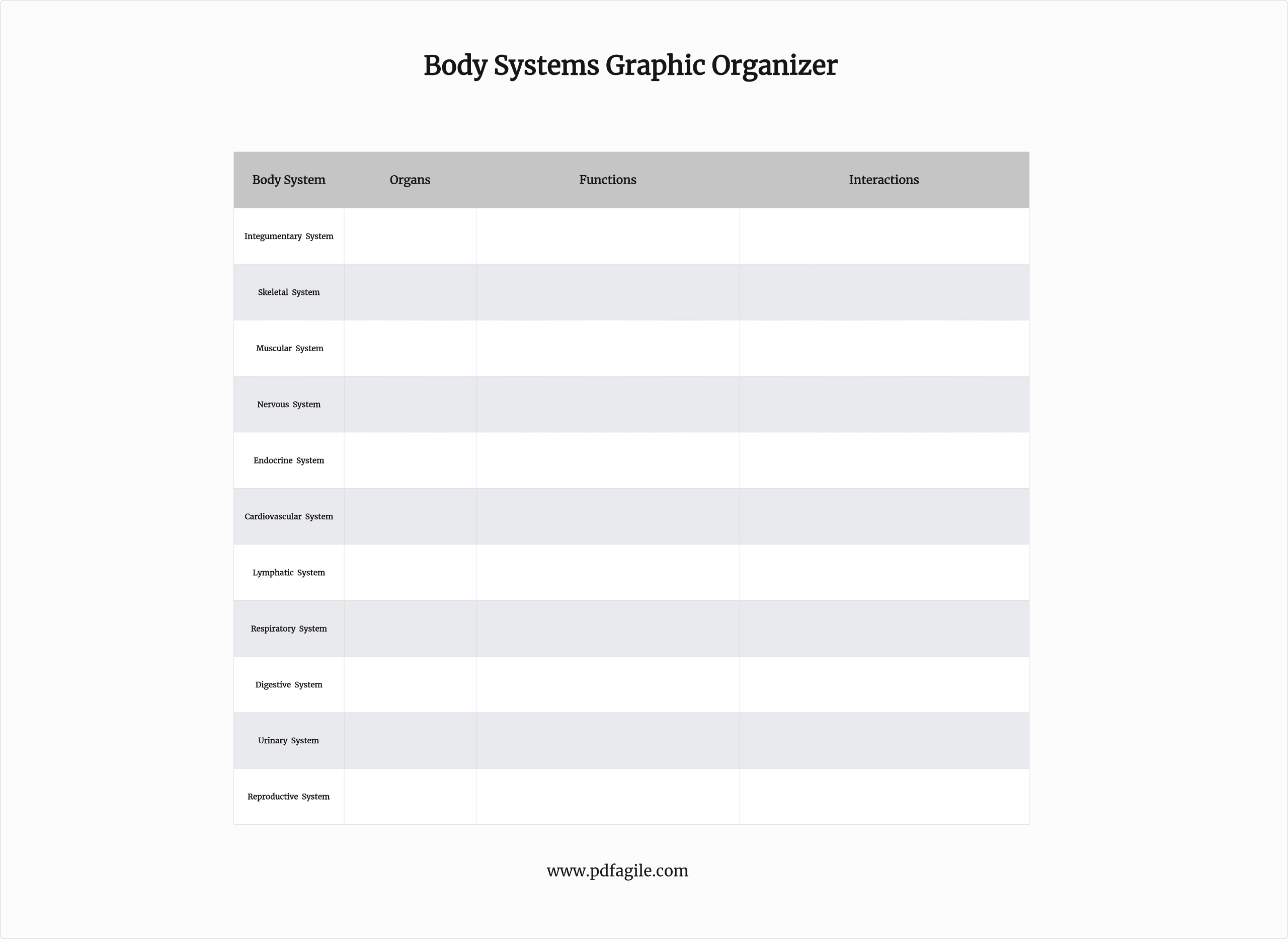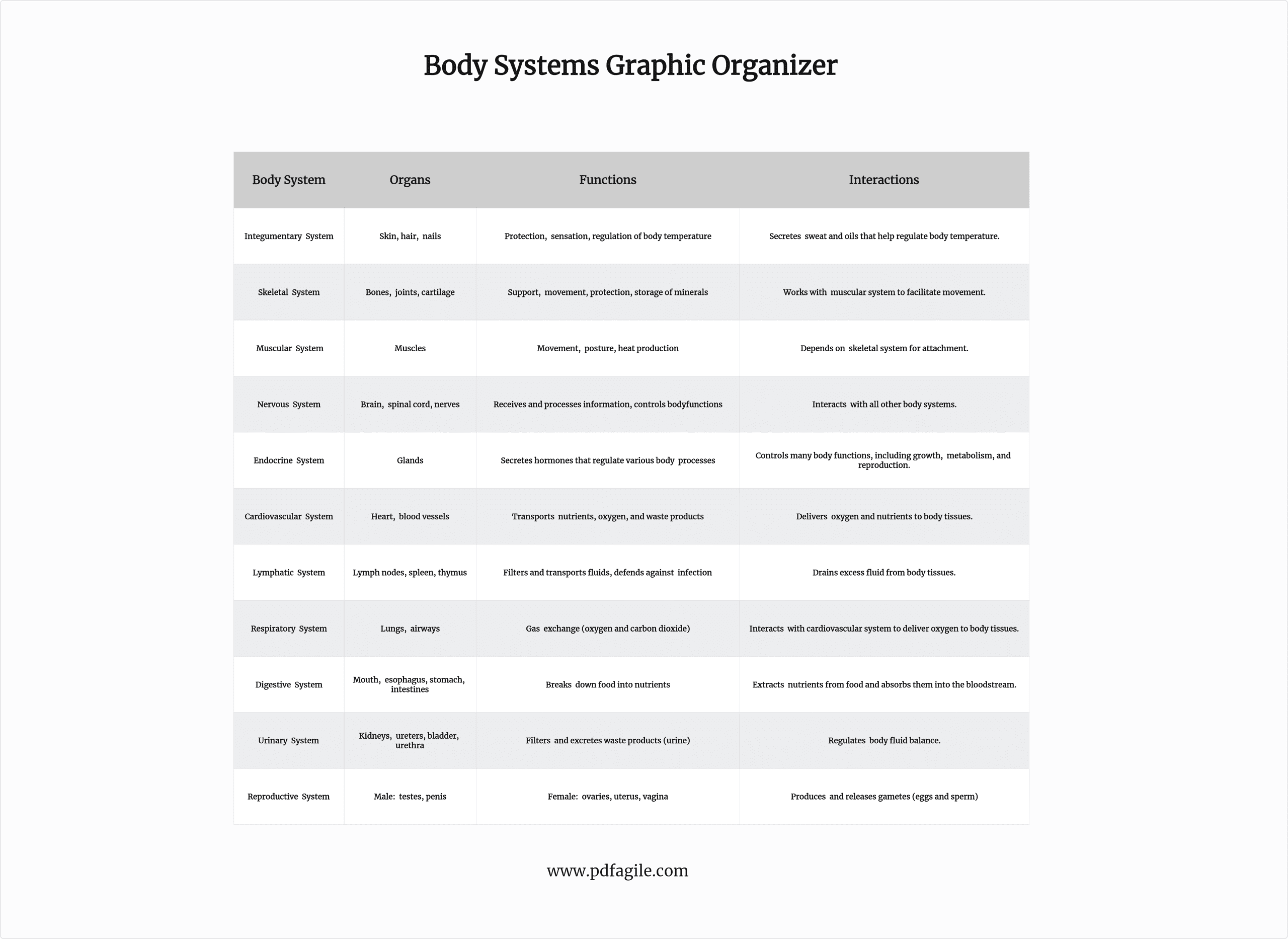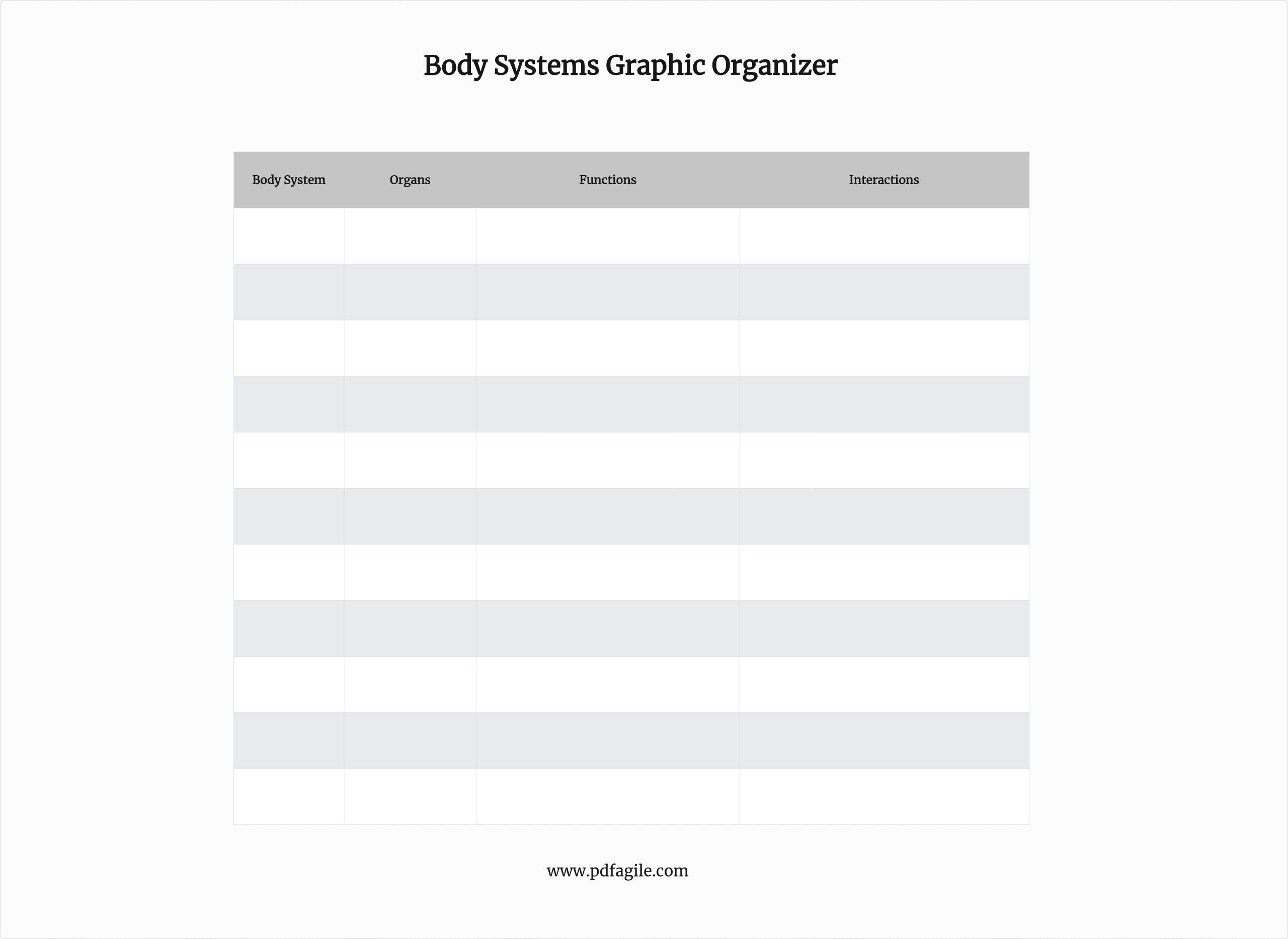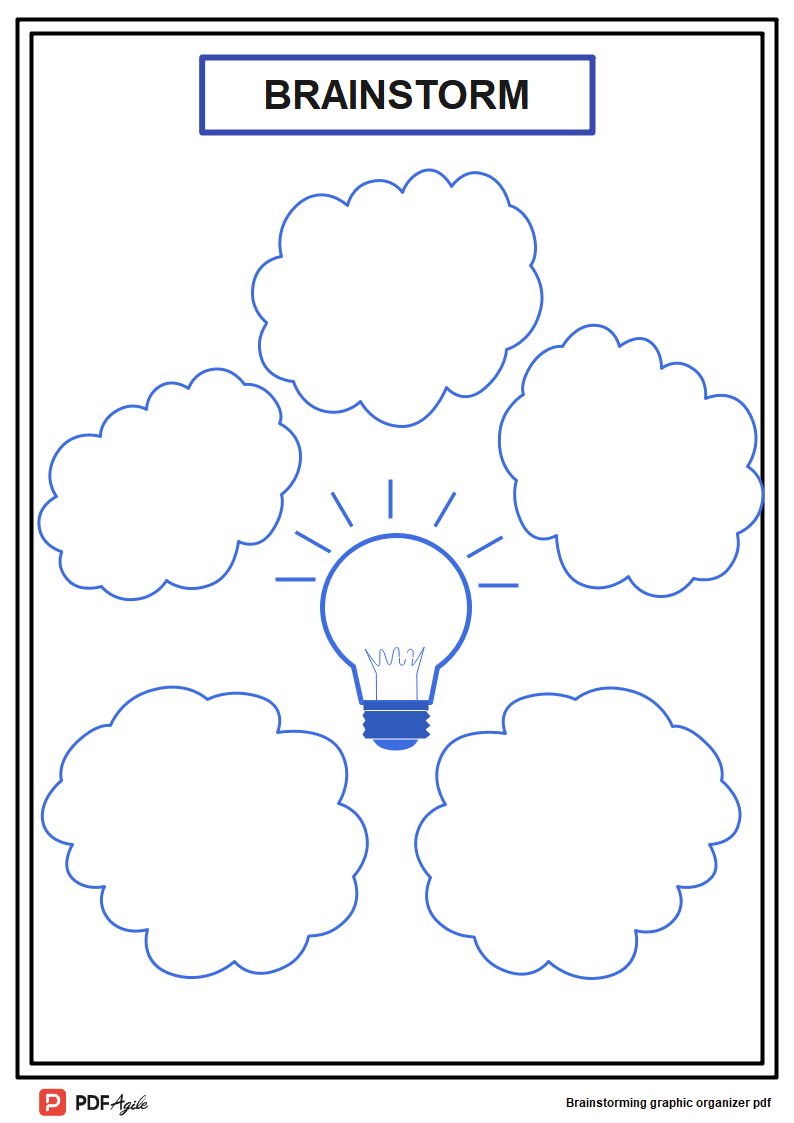A body systems graphic organizer is a visual tool that helps students learn about the different body systems and how they interact. It is a chart that lists the body systems, their organs, their functions, and how they interact with each other.
Benefits of Using a Body Systems Graphic Organizer
There are many benefits to using a body systems graphic organizer, including:
- Improved understanding of body systems: Graphic organizers help students visualize the different body systems and how they work together. This can help them to better understand how the human body functions. For example, a student who is learning about the respiratory system may use a graphic organizer to create a diagram that shows the lungs, airways, and diaphragm. This diagram can help the student to see how these different parts work together to facilitate breathing.
- Enhanced critical thinking skills: Graphic organizers require students to think critically about the information they are learning. They must identify the important information, organize it, and present it in a clear and concise way. For example, a student who is using a graphic organizer to learn about the digestive system may need to decide which organs to include in the organizer and how to group them. This process helps the student to develop their critical thinking skills.
- Increased retention of information: Graphic organizers help students to retain information more effectively. By visually representing the information, students are more likely to remember it. For example, a student who creates a graphic organizer about the circulatory system may be more likely to remember the different parts of the heart and how they work together.
- Facilitated collaboration and discussion: Graphic organizers can be used as a tool for collaboration and discussion. Students can work together to create a graphic organizer, and then use it to share their understanding of the body systems. For example, a group of students may work together to create a graphic organizer about the skeletal system. They can then use the organizer to discuss the different bones in the body and how they work together to support and protect the body.
How to Use a Body Systems Graphic Organizer
To use a body systems graphic organizer, follow these steps:
- Choose an appropriate template. There are many different body systems graphic organizer templates available online. Choose one that is appropriate for the age and level of your students. For example, a simple template with just the major body systems may be appropriate for younger students, while a more detailed template with subcategories may be more appropriate for older students.
- Identify the body systems to be included. Decide which body systems you want to include in your graphic organizer. You can include all of the body systems, or you can focus on a specific system or group of systems. For example, you may choose to focus on the digestive system, or you may choose to include all of the major body systems.
- Fill in the relevant information for each body system. For each body system, list the organs, functions, and interactions. For example, for the digestive system, you may list the mouth, esophagus, stomach, small intestine, large intestine, and rectum as organs. You may list digestion, absorption, and elimination as functions. And you may list how the digestive system interacts with the circulatory system and the respiratory system.
Tips for Using Body Systems Graphic Organizers
Here are a few additional tips for using body systems graphic organizers:
- Use different colors to represent different body systems. This can help students to visualize the different systems and how they interact.
- Use arrows to show how the body systems interact with each other. This can help students to understand the relationships between the different systems.
- Encourage students to be creative and to add their own drawings or images to their graphic organizers. This can help them to personalize the learning experience and to make the information more memorable.
Free Download of a Printable Body Systems Graphic Organizer Template
To help you get started, we’ve created a free, printable body systems graphic organizer template. You can download the template by clicking Use Template button on this page.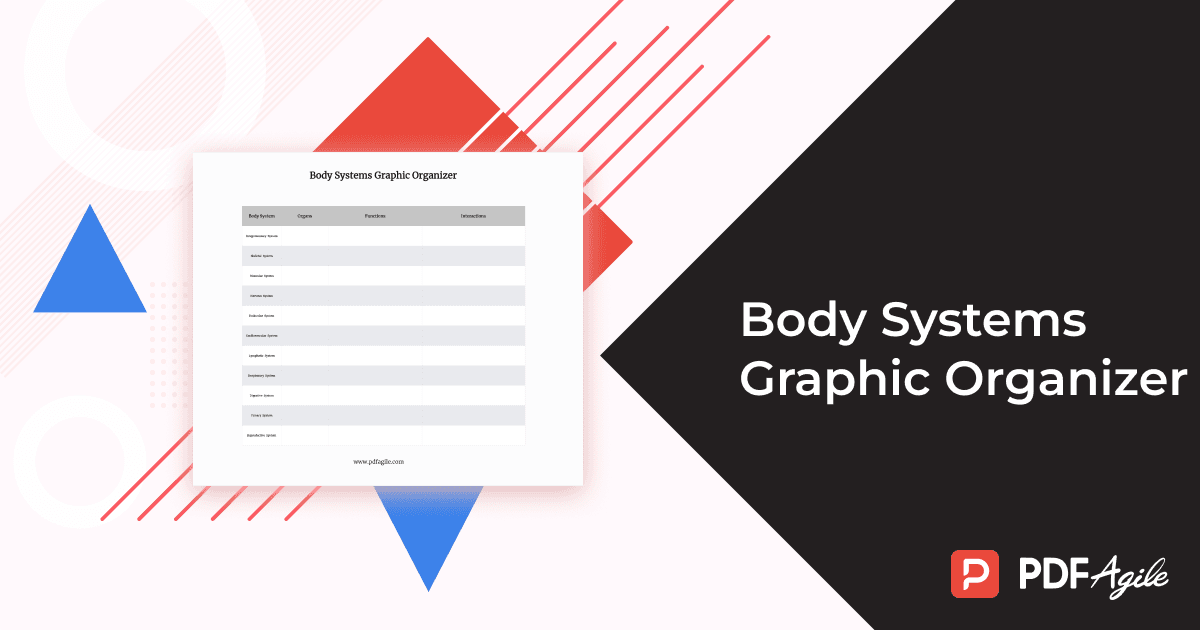
Additional Resources
In addition to the free template provided above, there are many other helpful graphic organizer resources available online. Here are a few of our favorites:
- PDF Agile Templates Center: This website offers a variety of free and printable graphic organizer templates, including body systems graphic organizers.
- Education.com: This website offers a variety of educational resources, including graphic organizers.
- Teachers Pay Teachers: This website offers a variety of teacher-created resources, including graphic organizers.

